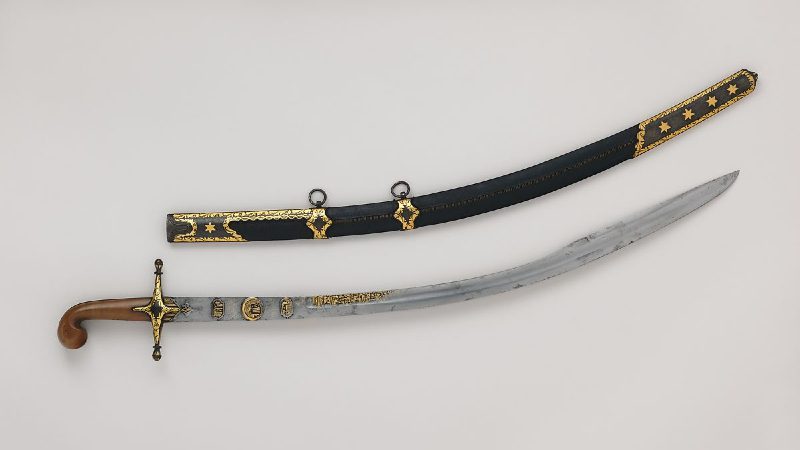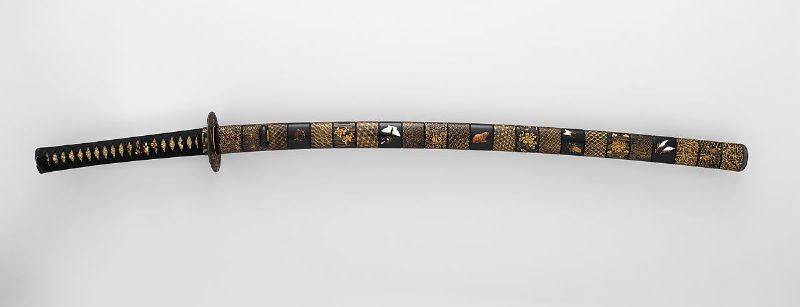Best Medieval Sword Types and Their History

In the Middle Ages, swords served as a symbol of the status and prestige of medieval knights. Medieval
Let’s explore the history of medieval swords, how they evolved into different types, and where you can get them online.
Types of Medieval Swords
The Middle Ages began in the 5th century after the fall of the Western Roman Empire and ended at the beginning of the Renaissance period, commonly interpreted as the 14th or 15th century. It is impossible to talk about a single type of
Here are the different types of medieval swords:
1. Viking Sword

From the 9th to 11th centuries, the Scandinavian Vikings plundered areas across Europe and beyond. Their primary weapons were axes and spears, though some carried long, straight, double-edged swords with a rounded tip. The Viking sword evolved from the Roman
The Vikings used their swords for slashing or hacking. Early
2. Arming Sword

Named because the men-of-arms wore them, the arming swords, sometimes called knightly swords, were cut-and-thrust weapons used with one hand. Hence, the other hand could use a small buckler shield for parrying. The
Most popular from about 1000 to 1300, the arming swords have a single-handed grip, a long, double-edged blade, and a sharp tip. They follow the cruciform pattern of many medieval swords. Early arming swords had simple straight crossguards, but later swords had quillons, or arms of the crossguard, that curve toward the blade.
The early Irish swords were the typical knightly swords, which the Irish likely adopted from the Anglo-Norman knights. However, some examples already existed in the region, even before the Anglo-Norman invasion of Ireland in the 12th century.
Arming swords with sharply tapering blades penetrated better when used for thrusting. The relatively large pommels also shifted the weight towards the hilt, making the sword more maneuverable at the cost of reduced weight in the cut.
Crusader Sword

During the crusading era, the
The early crusader swords generally had straight quillons and a broad blade with a fuller, almost reaching the point. Swords of the late crusading period typically had slightly curved quillons and a blade that tapered to the tip. Later, the daggers accompanied the
3. Falchion

Other single-handed swords evolved into falchions with heavy blades that swelled toward the point. These swords were single-edged and efficient for cutting and were too unbalanced to thrust well. However, their blade shape varied over time—some versions were similar to a modern machete, while others to a saber blade.
Some scholars suggest that the falchion developed from the old Norse sax, especially the Norwegian long sax, which was popular during the 11th and 12th centuries. On the other hand, the saber blade shape likely developed under an Eastern European influence, resembling the
The English archers often used the falchion on the battlefield. The medieval knights also used the falchion in a tournament melee, a mock battle between mounted and dismounted knights, to capture or disable competing knights. The machete-like blades fell out of use after about 1300, while the saber-like blade shape remained in use from the early 14th century to the mid-18th century.
4. Longsword

Characterized by its long grip, the longsword allowed the knight to use it single-handed while on horseback and two-handed when fighting on foot. Using two hands delivered more power and made the weapon more maneuverable. Longswords emerged during the 1250s but became most widespread from 1370 to 1440 and continued until after 1500.
Before 1300, early longswords had broad, parallel-sided, or slightly tapered blades, which delivered powerful cuts against mail armor. After 1350, longswords tapered throughout their length to a sharp point. Later versions of the longswords also had diamond-shaped blade sections, making them rigid thrusting weapons against opponents in plate armor. By the 1400s, cut-and-thrust types emerged, with blades that cut well and a sharp point efficient for thrusting.
Top 5 Medieval Swords Available Online
Medieval swords remain popular in martial arts, historical reenactment, cosplay, and live-action role-playing games or LARP. We rounded up the top medieval swords to help you find the best one that suits your needs:
1. Best Battle-Ready Sword : Darksword Armory Crusader Sword

If you’re looking for a medieval
The crusader
2. Best for HEMA: Federschwert Fencing Longsword

In Historical European Martial Arts or HEMA, practitioners use the federschwert to demonstrate longsword techniques. As a training
3. Best for LARP: Epic Armory Viking Sword

Viking combat is one of the most popular themes in historical reenactments, stage performances, and LARP. Both reenactments and LARP require safety, making this foam
This Viking
4. Best for Cosplay: Windlass SteelCrafts Medieval Falchion

If you want to channel your inner medieval knight, this falchion with a saber-like blade is perfect for you. It was one of the weapons used in medieval tournaments, along with maces and broadswords. Even if the
5. Best for Collection: Damascus Knightly Sword

Sword collectors often opt for swords with damascus steel blades, due to their watered, streaked appearance. The
This knightly
Facts About Medieval Swords
From around 1000 to 1500, swords evolved from the Viking swords into a classic cruciform design with straight crossguards resembling a cross. However, they were generally expensive and only accessible to wealthy knights.
Here are the things you need to know about medieval swords:
Swords were expensive weapons, so many relied on fighting knives called seax.

Sometimes spelled sax, the seax doubled as a fighting dagger and a working tool, providing those who could not afford a
Chain-mail and plate armor influenced

An 11th-century knight typically wore chain-mail armor, but by the 15th century, high-quality plate armor became popular. Slashing swords were inefficient against full plate armor, so sharply pointed thrusting swords became the preferred weapon. The blades usually had diamond cross-sections, thicker in the middle, and more rigid. Historian Ewart Oakeshott even established the typology of medieval swords based on their blade form and function.
Some crusader swords featured the crusader badge and family arms on the pommel.

The Crusades were a series of religious wars between Christians and Muslims, primarily to establish Christian kingdoms and recapture old Christian territories. During the Crusading period, the knights varied in their military organizations.
The Knights Templar was founded by crusader knights in the Temple of Solomon in Jerusalem in 1119. On the other hand, the Teutonic Knights military order was founded by German crusaders in 1198. Peter of Dreux, duke of Brittany, fought alongside Louis IX of France during the Seventh Crusade, and his
Some fencing masters call short longswords bastard swords.

In the fencing treatise The Schoole of the Noble and Worthy Science of Defense, Joseph Swetnam defined bastard swords as shorter than longswords yet longer than the short swords. It was primarily used for thrusting, but its grip allowed two or three fingers from the other hand to grasp it when necessary. Also called a hand-and-a-half
The bastard
Swords were not the primary weapons of medieval knights.

In medieval times, long lances served as shock weapons that could pierce gaps in plate armor. War hammers appeared around 1250 and were not uncommon during the Hundred Years’ War. The knights also used the mace, a club-like weapon with a metal head. After around 1470, maces had metal shafts and were popular with cavalrymen.
Longswords also served as sporting weapons.
One of the early tournament weapons were longswords and combatants wore full armors. Some fought to show their bravery without causing serious injury while others fought to the extreme until one surrendered or was incapacitated. Longsword fights had always included thrusts. When armor fell out of use, the single-handed rapier became fashionable.
The Scottish claymore is a Renaissance weapon.

During the Middle Ages, infantry swords were relatively lightweight and easier to wield, but by the Renaissance period, two-handed swords became popular in Europe. The Scottish Highlanders used the claymore from the 15th to the early 17th century. Most recognized for its quatrefoils on the quillons, it derived from earlier medieval Scottish and Irish longswords. Its name comes from the Scottish Gaelic term “claidheamh mór”, meaning great
The Excalibur
In Arthurian legends, the Excalibur
Early Islamic swords were straight rather than curved.

During the 11th and 16th centuries, the weapons of the Islamic world showed greater variation than those of their western counterparts. Islamic swords were generally double-edged and straight until the 11th century when cavalry sabers emerged under Turkish influence. Europeans first encountered curved blades in wars with the Ottomans and referred to them as scimitars, a collective term for curved Asian swords.
In the Far East, medieval Japan saw the emergence of samurai swords.

Japanese swordsmiths created swords for the samurai, the elite members of the warrior class. The samurai carried no shield, so they used the back of their
Longsword vs. Broadsword

The longsword is characterized by its long grip that allows two-handed use rather than its long blade. On the other hand, the broadsword is recognized by its broad blade, regardless of its hilt construction. However, longswords rarely acquired the complex hilts of later broadswords which would hinder the two-handed grip, making them efficient weapons.
Swords with a broad blade designed for cutting can be considered a broadsword. However, the term broadsword is often more associated with the 18th-century Scottish basket-hilted broadswords. The Venetian schiavona sometimes had a broad blade, but also featured rapier-like blades.
Conclusion
Early medieval swords were designed to hack through chain mail armor, but as plate armor improved, they became longer and more sharply tapered for thrusting. Today, medieval swords are among the weapons of HEMA practitioners and remain relevant in historical reenactment, cosplay, and LARP.

